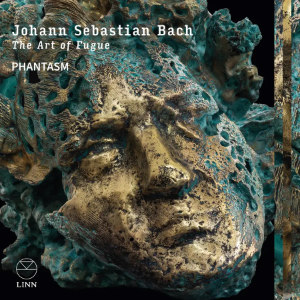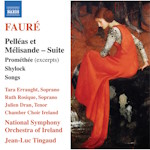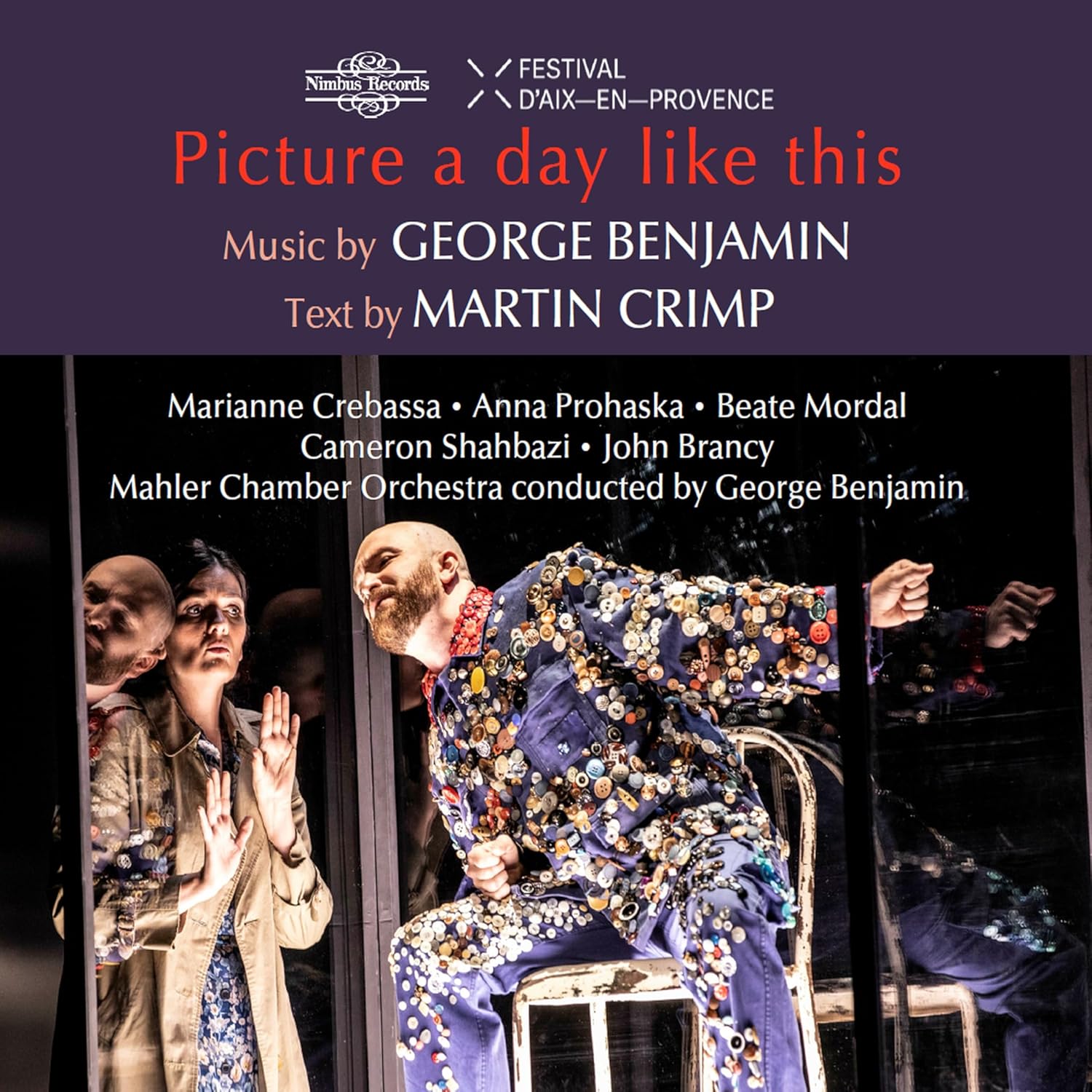
Johann Sebastian Bach (1685-1750)
The Art of Fugue BWV 1080 (1742-50)
Phantasm (viol consort)
Daniel Hyde (organ)
rec. 2024, St Andrew’s Church, Toddington; King’s College Chapel, Cambridge, UK
Linn CKD759 [80]
The Art of Fugue was Bach’s last work and he did not finish it. He wrote it in open score, meaning that each contrapuntal line has its own stave. This shows the purity of his writing – there is no fudging or abandonment of the fugal idea once the different voices have gone through their exposition, as can happen with other composers. Because of this, some people have wondered how he intended it to be performed and on what instrument. Some have even had the absurd idea that he did not intend it to be performed at all.
The answer is quite simple. All the pieces, except the one marked for two keyboards (the second version of Contrapunctus XIII) are written as keyboard music and fit under the two hands of a keyboard player. What keyboard is used is up to the player: it could be a clavichord, a harpsichord, an organ, or even that new instrument which was coming into vogue in Bach’s later years, the piano. Each of these will allow different qualities in the music to be brought out, a fact with which Bach was perfectly familiar and comfortable.
The purpose of the work is to expound and display the whole range of fugal techniques. All the fugues use versions of the same motto theme, sometimes direct and sometimes inverted. The early ones are quite simple, while the later ones increasingly bring in complicated contrapuntal techniques. Two of the fugues are completely invertible, that is to say that each is the mirror image of the other. The final, unfinished fugue brings problems of its own which I shall come to. Had he lived, Bach might have provided preludes for the fugues. If you want a detailed analysis of the fugues, the book to consult is Donald Tovey’s edition, which is now available in one volume together with his Companion to the work in Dover Books.
As a great transcriber, Bach also would not have objected to performing the work using an ensemble, so that each musical line has its own instrument. And indeed the work has been transcribed numerous times, and for various combinations of instruments. Here we have it in a version for viol consort. Viols were going out of favour during the eighteenth century, being replaced by the louder and more versatile instruments of the violin family. In comparison with these, viols have flat backs, gut strings and more of them, frets to assist tuning and tone, and are played upright and not on the shoulder. They are also quieter, with a lesser expressive range, a more reticent tone and are less amenable to virtuosity. During the heyday of the viols, which in Britain was the early seventeenth century, they were often played by amateurs and there is a fine repertoire of works for viol consorts, which I have come to enjoy a great deal. There is no reason not to play the Art of Fugue with a viol consort. Here it consists of two treble viols, a tenor viol and a bass viol. Phantasm is one of the leading viol consorts at the moment and has recorded much of the viol repertory; its members also play modern instruments.
It so happened that I was listening to this disc within days of hearing a live performance of the work on the piano by Andras Schiff, which made me particularly sensitive to the effect of the medium on the work. Compared to the piano, the viol has much less power of attack, so that crunchy effects, for example in Contrapunctus II and Contrapunctus VII, are much less forceful than one would expect. On the other hand, the viol consort excels in bringing out the separate polyphonic lines, particularly in complex pieces such as Contrapunctus XI. The gentleness of the viol consort makes such a work as Contrapunctus X particularly moving and expressive. And the fact that we are hearing string rather than keyboard instruments means that long notes, particularly in the bass line, can be better sustained, to their advantage. I had thought that the fact that viols can be slow to speak would put the faster pieces, such as Contrapunctus XIII, at a disadvantage, but it turns out that this is not so, and the players of Phantasm can get round the notes with an agility which surprised me.
As well as the fugues, Bach included four canons. These are two-part pieces in strict canon, devised according to various different schemes. They are played here, not by Phantasm, but by Daniel Hyde on the organ. These go pretty well, except that I though the Canon alla decima much too slow, and also that Hyde is wrong to interpret the dotted note rhythm as different from the triplet one; I know the notation suggests this, but I can’t think this is what Bach wanted, and Phantasm don’t do it in the equivalent places.
As for the unfinished fugue, this expounds three subjects and starts combining them before the draft ends. Phantasm play this beautifully, but to let it peter out is frustrating, inartistic – and unnecessary, even though Schiff also did it in the live performance I heard. In 1880 Gustav Nottebohm, best remembered as the decipherer of Beethoven’s sketchbooks, demonstrated that the three subjects combine with the motto theme in a way which could not possibly be accidental. Since then, a number of scholars have made completions of the work, embodying this discovery. The best of them in my view is the 1931 one by Donald Tovey, which you can hear it on the recording by Delmé string quartet on Hyperion, but any of them would have been preferable to letting the work just dwindle away.
This is not, in fact, the first recording of the Art of Fugue by a viol consort. Fretwork made such a version in 2002 on Harmonia Mundi. Compared to Phantasm, Fretwork are lighter and faster, and some may prefer this. However, there is no doubting the expressive intensity of Phantasm. If you care for the work, you should consider this.
Stephen Barber
Buying this recording via a link below generates revenue for MWI, which helps the site remain free




















